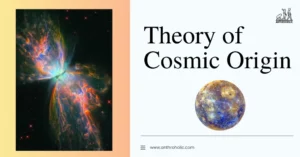AI Answer Evaluation Platform Live Now. Try Free Answer Evaluation Now
Schedules
A schedule, in the context of data collection, refers to a set of questions arranged systematically. These questions are designed to gather specific data from respondents in an organized, structured manner. Schedules are typically administered by the researcher or their representative who records responses directly. They can range from structured interviews to observational studies [1].

Types of Schedules
Schedules come in various forms, each tailored to meet different data collection needs. The three main types are:
- Interview Schedule: Interview schedules consist of a series of questions that the interviewer asks the respondent. The researcher records the responses. The questions can be open-ended or close-ended [2].
- Observation Schedule: Here, researchers observe and record specific behaviors, events, or phenomena within their natural settings. An observation schedule provides a systematic method to observe and quantify behavior [3].
- Measurement Schedule: This involves collecting data about physical attributes, such as height, weight, or other quantifiable features. This type of schedule often applies in medical or sports research.
Schedules Vs. Questionnaires
While schedules and questionnaires are similar data collection tools, they differ significantly in their usage. Table 1 provides a comparison of the two:
| Schedule | Questionnaire | |
|---|---|---|
| Administered by | Researcher or representative | Respondent themselves |
| Interaction | High interaction | No interaction |
| Response recording | By the researcher | By the respondent |
| Ideal for | Small-scale studies, illiterate participants | Large-scale studies, literate respondents |
Table 1: Comparison between Schedules and Questionnaires.
Benefits of Using Schedules
Schedules offer several benefits in data collection:
- Controlled Response Environment: Since the researcher administers the schedule, they can control the response environment, clarifying doubts and ensuring the respondent understands each question.
- Flexible: Schedules allow for spontaneity and flexibility. If a respondent’s answer is ambiguous, the interviewer can request further clarification.
- High Response Rate: Schedules usually yield higher response rates compared to self-administered questionnaires, as they are more engaging and personal [4].
Drawbacks of Schedules
Despite their advantages, schedules have some limitations:
- Time-Consuming: Schedules require more time for data collection due to the involvement of the researcher in the process.
- Training Required: The interviewer needs training to ensure they administer the schedule correctly and maintain consistency across different respondents.
- Possibility of Bias: The presence of the researcher might influence respondents’ answers, creating a response bias.
Tips for Using Schedules in Data Collection
When using schedules for data collection, consider the following:
- Clarity: Ensure all questions are clear and unambiguous to avoid misunderstanding.
- Consistency: The interviewer should maintain consistency in the manner of asking questions to prevent bias.
- Confidentiality: Assure respondents about the confidentiality of their responses to encourage honest answers.
Detailed Exploration of Schedule Types
Interview Schedules
Interview schedules provide a structured format for direct interaction with respondents. This format typically offers a mix of close-ended and open-ended questions, facilitating in-depth data collection. The interviewer maintains the pace and direction of the discussion, probing further when needed. The method is suitable for sensitive topics where respondents may need encouragement to open up [5].
Observation Schedules
Observation schedules primarily focus on the researcher’s objective observation of behaviors, events, or situations. Such schedules are often employed in naturalistic observations where the researcher records behaviors in natural environments. An observation schedule might note frequency, duration, or intensity of specific behaviors [6]. This method reduces reliance on respondent honesty or recall accuracy.
Measurement Schedules
Measurement schedules are employed when the research requires collection of quantifiable data related to physical attributes, such as height, weight, distance, time, etc. These schedules provide accurate, objective data, primarily used in scientific, sports, or medical research.
Schedules: Preparation and Implementation
The effective use of schedules for data collection involves careful preparation and methodical implementation. Here are key steps involved:
- Develop the Schedule: The first step is to develop a draft schedule, containing all the questions necessary to gather the required data.
- Pilot Test: Conduct a pilot test of the schedule on a small group. The aim is to test the schedule’s effectiveness and tweak it as needed [7].
- Finalize the Schedule: After refining the schedule, finalize it for data collection.
- Train Interviewers: If using interview schedules, train interviewers on effective interviewing and recording techniques.
- Collect Data: Administer the schedule to the selected respondents and record their responses.
- Analyze Data: After data collection, analyze the responses to derive meaningful conclusions.
Limitations and Considerations
Despite the effectiveness of schedules in data collection, researchers should consider potential limitations. These include the risk of interviewer bias, where the interviewer’s presence might influence the respondent’s answers, and the fact that data collection via schedules can be more time-consuming and resource-intensive compared to self-administered tools like questionnaires [8].
Nevertheless, when properly implemented, schedules are an invaluable tool in any researcher’s data collection toolkit. They offer a balance between structured data collection and the flexibility to delve deeper, enabling researchers to gather detailed, reliable data.
References
[1] Babbie, E. (2010). The Practice of Social Research. Wadsworth Cengage.
[2] Dörnyei, Z. (2003). Questionnaires in Second Language Research: Construction, Administration, and Processing. Routledge.
[3] Martin, P. and Bateson, P. (2007). Measuring Behaviour: An Introductory Guide. Cambridge University Press.
[4] Bryman, A. (2012). Social Research Methods. Oxford University Press.
[5] Weiss, R.S. (1995). Learning from Strangers: The Art and Method of Qualitative Interview Studies. The Free Press.
[6] Bakeman, R., & Gottman, J.M. (1997). Observing Interaction: An Introduction to Sequential Analysis. Cambridge University Press.
[7] Bhattacherjee, A. (2012). Social Science Research: Principles, Methods, and Practices. Textbooks Collection.
[8] De Vaus, D.A. (2002). Surveys in Social Research. Routledge.




